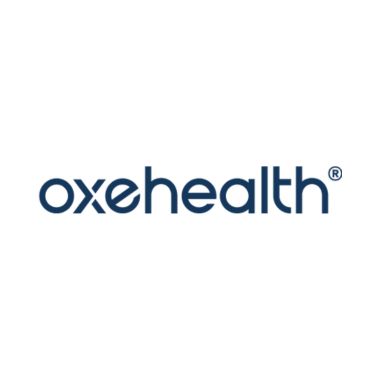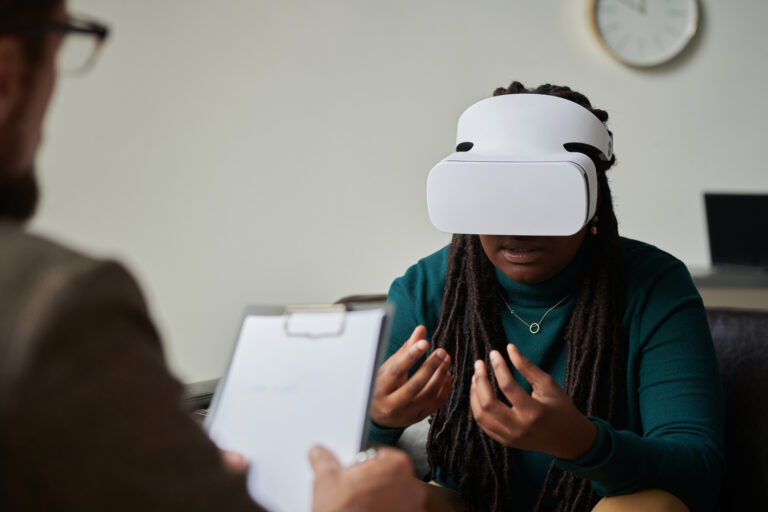Oxehealth is a global leader in vision-based patient monitoring and management. We exist to help clinical teams help patients.
We recognise that receiving mental health care, and other forms of inpatient or nursing care, can be a challenging experience for patients. We also recognise that caring for patients with poor mental health and other conditions can, at times, be a challenging experience for nurses and clinical teams.

We created Oxevision, a supportive technology, because concerned mental health providers asked us to develop a system that could help them to deliver better care to their patients – care that is safer and higher quality. We’ve been working with and for mental health providers and enabling them to deliver these improvements in care since 2014.
Oxevision: The first patient monitoring solution designed for mental health
Oxevision is a tool that helps staff care for patients more safely. It has been designed specifically for mental health care and has been developed in collaboration with patients, relatives, doctors and nurses.
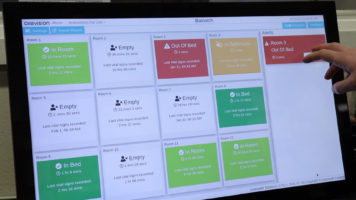
Oxevision is made up of a suite of modules built specifically for the needs of inpatient mental health, including:
- A digital observations tool that replaces paper and clipboard documentation
- A regulated medical device (class IIa in Europe and Class II in the US) that operates with an infrared-sensitive camera to deliver contact-free pulse and breathing rate measurements
- Location and activity based alerts and warnings, providing staff with additional insights to enable them to intervene before adverse events occur
- Vital signs, activity, and observations reports.
NHS mental health Trusts that have augmented their clinical practice with Oxevision have reported:

¹ Two intervention wards (22-bed female acute and 20-bed male acute) and two control wards (20-bed female acute and 20-bed male acute).
² Reductions denote the relative percentage change, which was calculated to compare the rate of change from the pre to the post go-live period on intervention and control wards.
³ Bedroom incidents include those occurring in ensuite bathrooms.
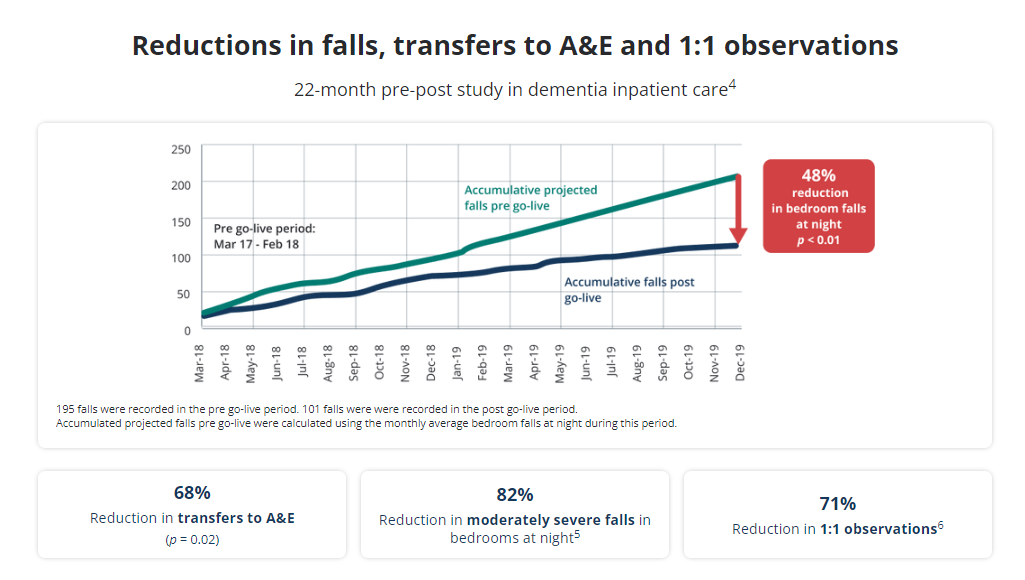
⁴ Two intervention wards (12-bed male dementia and 12-bed female dementia). Oxevision was installed in 6 bedrooms per ward. i.e. half of all bedrooms across the two wards.
⁵ Moderate severity falls are those that resulted in a moderate increase in treatment, possible surgical intervention, cancelling of treatment, or transfer to another area, and which caused significant but not permanent harm to one or more patients. p value could not be calculated due to low sample size (7 falls pre go-live; 1 fall post go-live).
⁶ This reduction is equivalent to saving 7,810 clinical hours per year for the two wards. p value could not be calculated because patient identifiers were not available.

⁷ One intervention ward (11-bed male PICU).
⁸ Reductions denote the percentage change in incident rate from the pre to the post go-live period.
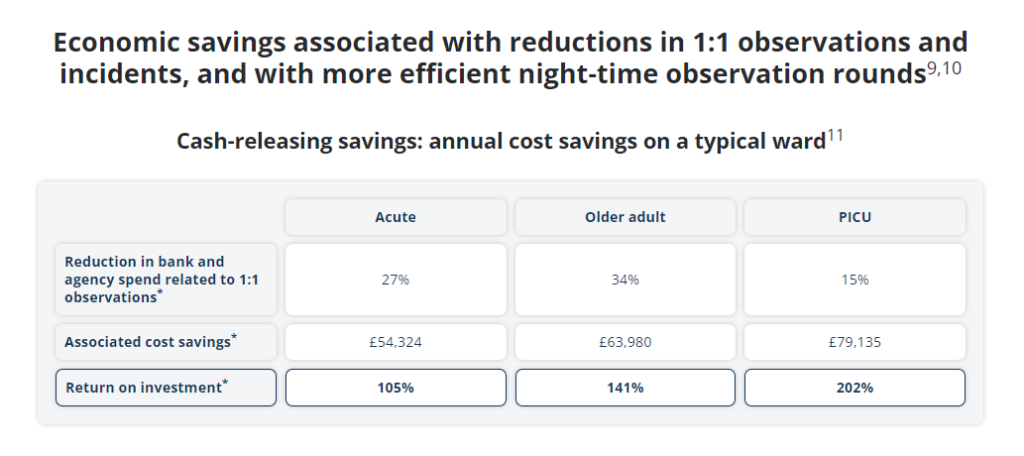
⁹ Acute and older adult results are standardised for a 16-bed ward with 90% occupancy; PICU results are standardised for a 12-bed ward with 90% occupancy.
¹⁰ Cost savings are associated with staff working beyond planned staffing levels. Time savings are for staff working within planned staffing levels.
¹¹ Acute and PICU data comes from seven wards; older adult data comes from five wards.
Transforming mental health inpatient care in Europe and the United States
Oxehealth’s end-to-end service supports customers throughout their journey with Oxevision – from deploying the system effectively and efficiently to creating data-enabled systems of care that foster continuous learning and improvement.
Oxehealth is a spinout from the University of Oxford Institute of Biomedical Engineering and continues to conduct cutting edge research to unlock breakthroughs in mental health diagnosis, treatment and care.

As proud members of the NHS Confederation, we are already trusted by half of NHS England’s mental health providers and are now beginning to transform inpatient care in Europe and the United States.
